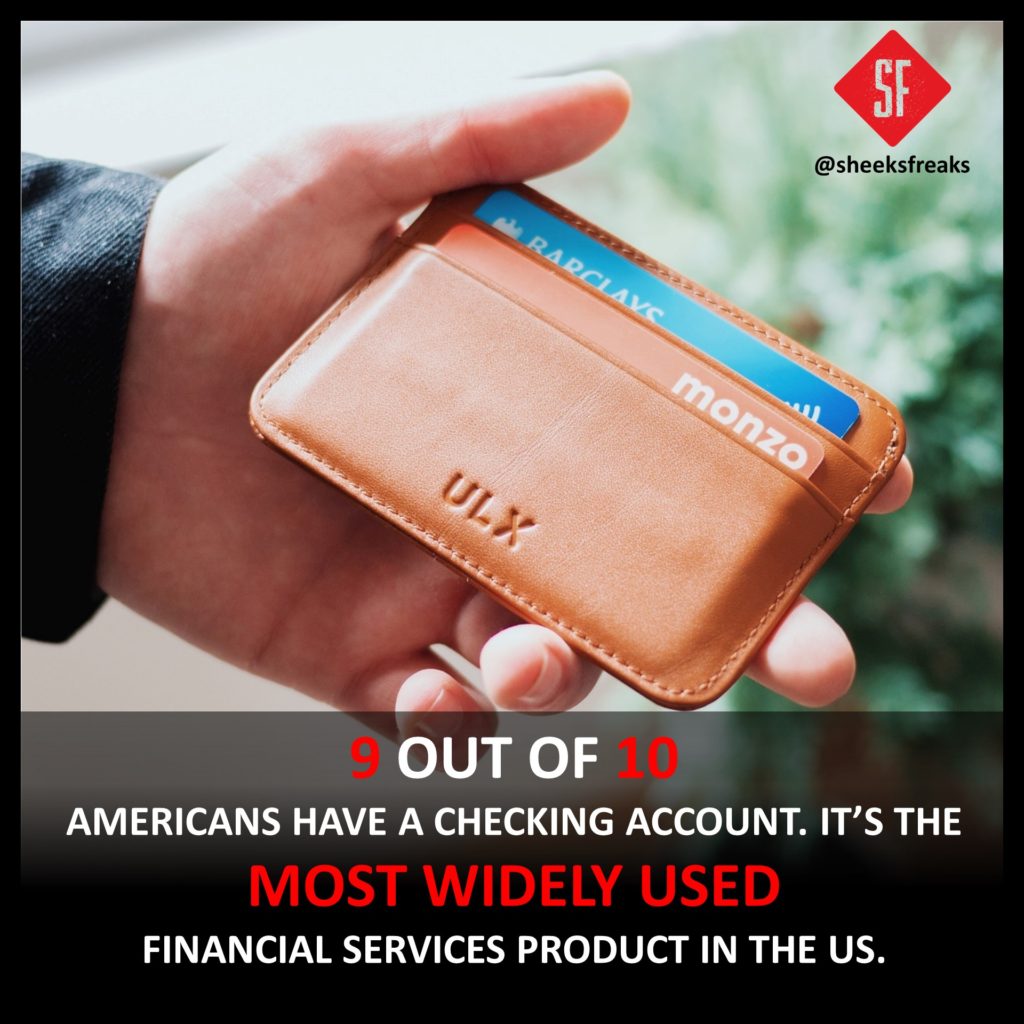This post will explain how Olivia opened her first checking account. She did everything right and is now using that account to start down her road to financial independence.

You CANNOT begin your financial journey, or even manage your money, without a checking account. It is the most basic financial account that you need, and every FI Freak should have one!
But I’m not 18 yet – Still open a checking account! The younger you are when you open your first account, the better. The only difference: You will likely have to open an account with a parent as a co-signer.
If you are a high school or college student, a student checking account is the way to go, and Olivia opened hers at Chase. Pretty much any of the major banks will offer a student checking account such as Wells Fargo, US Bank, Chase, and Bank of America.

Olivia knows that a checking account is the most basic account offered by banks where she can store her money. She also knows that checking accounts have many advantages, such as:
- Olivia can lose her cash. She can’t lose her money that’s in a checking account.
- Pretty much every checking account will have a debit card. Olivia can use that when she makes purchases, much like a credit card, so she doesn’t have to carry cash.
- She can use her debit card to get cash from an ATM, if needed.
- Just about every bank has an app that would allow her to quickly check her balance, look at recent transactions, transfer money to a friend, and find ATMs or bank locations nearby.
- Checking accounts can be free.
- She can easily access her money when she needs to.
- Olivia set up some bills to automatically deduct from her checking account.
- She can pay other bills directly from the app on her phone when she wants to.
- She can have her paycheck deposited directly into her checking account.
CORONAVIRUS UPDATE – Because of the Coronavirus pandemic, banks may not be taking appointments to meet with a representative at their branch. Different regions of the country have different circumstances, so you should call your local bank to see what they are allowing. If you cannot meet with someone at the bank, talk to the representative to ask the essential questions outlined in this article. Once you have all the info you need, most banks will then allow you to open the account online. But you should talk to the representative first.
Step 1: Olivia chose a bank
- The options for local banks vary across the nation. Choose one that works best for your area.
- Olivia is a college student, so she opened a student account. If you are a student, choose a bank that has student accounts.
- Olivia’s parents use Chase Bank, so that’s where she opened her account. It can be beneficial to use the same bank your parents use.
- If needed: Google search for “student checking accounts in [name of your city/town].”
Step 2: Olivia called the bank
- Olivia called the bank and told them she would like to open a checking account. If you are under 18, tell them how old you are and that your parent will be a co-signer.
- Olivia told the banker she wanted an account with:
- A small initial deposit to open the account, perhaps $50 or less (depending on how much money you have available)
- No maintenance fees
- No minimum balance requirement
- Free ATM usage when using ATMs in the bank’s network
- Great mobile app
- Low fees if she overdrew her account (went below a zero balance)
- A debit card with a very low monthly fee or no fee at all
- (This one is a bonus but not required): An ATM Fee Reimbursement where the bank will reimburse her for ATM fees charged by other banks when she uses another bank’s ATM

Since the banker’s answers were sufficient, Olivia then:
- Made an appointment to open a new account. (If you are under 18, make sure your parent can also go to the appointment.)
- Asked the banker what forms of ID she would need to bring (and your parent). She wrote them down.
- Asked the banker how much money she would need to bring to open the account. She wrote it down.
Step 3: Before Olivia went to her appointment, she:
- Printed the list from Step 2 to take with her
- Got the required amount of money to open her account.
- Planned on the appointment taking about an hour.
- Thought of a 4-digit PIN that she would want to use for her ATM card. (four number code)
- Gathered the required forms of ID.
Step 4: At her appointment, Olivia asked the following questions. She wrote down the answers.
- What is the minimum balance requirement, if any?
- If my balance falls below zero or the minimum balance, what is the fee?
- What are the other fees for this account, and how do I avoid them?
- Can I use my ATM card an unlimited number of times per month?
- Can I use all ATMs without fees? If not, which ones can I use for free?
- What can your mobile app do for me?
- When will I get my debit card?
And that’s how Olivia began making smart money decisions – she opened her first checking account the right way. She now has an account with great benefits like no maintenance fees and no minimum balance requirements. Plus, she has a debit card that she can use responsibly. She has taken one of the first steps for personal finance.

In the next two posts, we’ll take a look at how Olivia is managing her checking account, how she is using that debit card wisely, why she’s keeping a certain amount of money in the account, and how she’s using an app to track her transactions easily. All of these things put a smile on Olivia’s face because she knows she’s taking care of her money and building her best future.

Leave a Reply